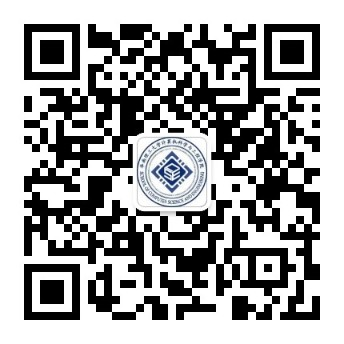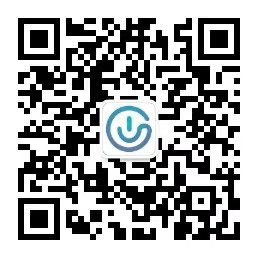《数字逻辑》教学大纲
课程代码 | 045101212 |
课程名称 | 数字逻辑 |
英文名称 | Digital Logic |
课程类别 | 专业基础课 |
课程性质 | 必修 |
学时 | 总学时:32 实验学时:8 |
学分 | 2.0 |
开课学期 | 2 |
开课单位 | 计算机科学与工程学院 |
适用专业 | 计算机科学与技术,网络工程,信息安全 |
授课语言 | 中英文双语授课 |
先修课程 | 离散数学、计算机科学概论 |
课程对毕业要求的支撑 | 本课程对学生达到如下毕业要求有如下贡献: 1.思政建设:实现计算机专业知识教学与立德树人教育的有机融合;激发学生“实干兴邦”的爱国奋斗精神。 2.工程知识:能够将数学、自然科学、工程基础和专业知识用于解决计算机复杂工程问题。 3.问题分析:能够应用数学、自然科学和工程科学的基本原理,识别、表达、并通过文献研究分析计算机复杂工程问题,以获得有效结论。 4.设计/开发解决方案:能够设计针对复杂与计算机相关工程问题的解决方案,设计满足特定需求的系统、单元(部件)或工艺流程,并能够在设计环节中体现创新意识,考虑社会、健康、安全、法律、文化以及环境等因素。 5.研究:能够基于科学原理并采用科学方法对与计算机相关复杂工程问题进行研究,包括设计实验、分析与解释数据、并通过信息综合得到合理有效的结论。 |
课程目标 | 完成课程后,学生将具备以下能力: (1)掌握数字系统的基本原理和基本知识,培养学生发现问题、解决问题的基本能力。 (2)以布尔代数为工具,掌握对各类组合电路、同步时序电路、异步时序电路的基本逻辑单元分析和设计。 (3)掌握常用的集成电路器件的功能与特点,能够初步进行数字系统设计,培养学生的实践能力。 |
课程简介 | 数字逻辑是计算机科学与技术专业的专业基础课之一,是该专业本科生必修的主干课程。数字逻辑课程阐明了数字逻辑电路的基本概念和分析设计方法,以门电路构成的逻辑电路的“经典方法”作为基本技能训练,提高以全加器、译码器、数据选择器、计数器、寄存器以及存储 器等较复杂的逻辑器件来构成更复杂的逻辑电路的分析与设计的能力;了解和初步掌握硬件描述语言,能够利用硬件描述语言进行中小规模集成电路的设计。 |
教学内容与学时分配 | 1.课程目的、意义与内容组织 (1学时) 思政建设—实现计算机专业知识教学与立德树人教育的有机融合,了解数字系统的特点。 2.数制与编码 (1学时) 2.1数制转换 2.2基本编码方法 3.组合逻辑设计原理 (4学时) 3.1开关代数 (2学时) 3.2组合电路分析(1学时) 3.3组合电路设计(1学时) 4.组合逻辑构件(4学时) 4.1译码器
4.3比较器 4.4全加器 5.同步时序逻辑分析及设计(5学时) 5.1触发器 (1学时) 5.2时序逻辑分析 (2学时) 5.3时序逻辑设计 (2学时) 6.时序逻辑设计实践(3学时) 6.1计数器 6.2位移寄存器 6.3序列检测电路和序列发生器的设计 7.硬件描述语言(4学时) 7.1VHDL或Verilog语言的特点与程序结构 7.2VHDL或Verilog基本语法 7.3 用VHDL或Verilog语言的进行数字系统设计与分析 8.综合实践和复习(2学时) |
实验教学(包括上机学时、实验学时、实践学时) | 实验学时8学时: 实验一 组合逻辑设计实验 (1学时) 实验二 组合逻辑标准构件的应用(1学时) 实验三 时序逻辑电路实验 (2学时) 实验四 可编程逻辑语言实验(1学时) 实验五 时序列发生器和检测器的设计与实现 (3学时) |
教学方法 | 课程教学以课堂教学、课外作业、综合讨论、网络以及授课教师的科研项目于积累等共同实施。 |
考核方式 | 本课程注重过程考核,成绩比例为: 平时作业、实验和课堂表现:30% 期末考试(闭卷):70% |
教材及参考书 | 现用教材:数字逻辑(第2版),毛法尧 高等教育出版社 主要参考资料: [1] John F.Wakerly,数字设计原理与实践,机械工业出版社 [2]刘博主编,数字逻辑,人民邮电出版社,2011 [3]布朗主编,数字逻辑基础与VHDL设计(第3版) 清华大学出版社,2011 [4]王春露 等编著,数字逻辑,清华大学出版社,2010 |
制定人及制定时间 | 毕盛,2019年4月 |
“Digital Logic”Syllabus
Course Code | 045101212 |
Course Title | Digital Logic |
Course Category | Disciplinary Basic Course |
Course Nature | Compulsory Course |
Class Hours | 32 |
Credits | 2.0 |
Semester | The Second |
Institute | School of Computer Science and Engineering |
Program Oriented | Computer Science and Technology, network engineering, information safety |
Teaching Language | Chinese and English |
Prerequisites | Foundations of Computer Science, Discrete Mathematics |
Student Outcomes (Special Training Ability) | This course can be helpful for students to get the following abilities: 1.Ideological and political construction: realize the organic integration of computer professional knowledge teaching and moral education;Inspire the students' patriotic spirit of "making the country prosperous by doing". 2.To use engineering knowledge: students can use mathematical knowledge, basic engineering knowledge and special knowledge to solve the complex problems in the field of computer science and technology. 3.To analyze problems: students can use mathematical knowledge, basic engineering knowledge and special knowledge to analyze the complex engineering problems in the field of computer science and technology. 4.To design scheme for solving problems: students can design scheme for solving complex problems and can design the systems that satisfy the requirement. 5.To do research works: students can use scientific methods to study the complex problems in the field of computer science and technology including to design experiments, to analyze and commentate the experimental data. |
Teaching Objectives | After learning this course, the students can have the following abilities:
|
Course Description | Digital logic is a wide-open and rapidly-growing field, and yet every single digital device operates on some combination of basic logic gates. This course starts from the learning of basic logic gates and improve the abilities to analyze and design complex circuits that includes full adder, decoder, counter and register. |
Teaching Content and Class Hours Distribution | Introduction (1 Hour) Ideological and political construction -- realize the organic integration of digital system and moral education. Number Systems and Codes (1 Hour) Number System conversion Basic methods for coding Number System Principles for design of combinational circuit (4 Hours) Boolean algebra (2 Hours) Analysis of combinational circuit (1 Hours) Designation of combinational circuit (1 Hours) Combinational circuit design practice (4 Hours) Decodes Multiplexer comparator Full Adder Principles for sequential circuit design (5 Hours) Flip-flop (1 Hour) Sequential circuit Analysis (2 Hours) Sequential circuit Design (2 Hours) Sequential circuit design practice (3 Hours) 6.1 Counter 6.2 Register 6.3 Design of sequence detection circuit and sequence generator Hardware description language (4 Hours) Program structure of VHDL or Verilog Grammar of VHDL or Verilog Digital design using VHDL or Verilog Comprehensive practice and review(2Hours) |
Experimental Teaching | Experiment Hours (8 Hours) Experiment 1 Combinatorial Logic experiments (1 Hour) Experiment 2 Application of composite logic standard components (1 Hour) Experiment 3 Sequential logic circuit experiment (2 Hours) Experiment 4 Programmable logic language experiment (1 Hour) Experiment 5 Design and implementation of time series generator and detector (3 Hours) |
Teaching Method | Classroom teaching, extracurricular homework, comprehensive discussion, network and research projects of teachers. |
Examination Method | Classroom performance and Experiments:30% The final exam:70% |
Teaching Materials and Reference Books | [1] John F.Wakerly, Digital Design Principles and Practices, Wakely [2] Liu Bo, Digital Logic, The People's Posts and Telecommunications Press,2011 [3] Stephen Brown, Fundamentals of digital logic and VHDL design (Third Edition), Tinghua University Press, 2011 [4] Wang Chunlu, Digital Logic, Tinghua University Press,2010 |
Prepared by Whom and When | Sheng Bi 2019.04 |
《数字逻辑》实验教学大纲
课程代码 | 045101212 |
课程名称 | 数字逻辑 |
英文名称 | Digital Logic |
课程类别 | 专业基础课 |
课程性质 | 必修 |
学时 | 总学时:32学时 实验:8学时 |
学分 | 2.0 |
开课学期 | 2 |
开课单位 | 计算机科学与工程学院 |
适用专业 | 计算机科学与技术,网络工程,信息安全 |
授课语言 | 中文 |
先修课程 | 离散数学、计算机科学概论 |
毕业要求(专业培养能力) | 本课程对学生达到如下毕业要求有如下贡献: 1.思政建设:实现计算机专业知识教学与立德树人教育的有机融合;激发学生“实干兴邦”的爱国奋斗精神。 2.工程知识:能够将数学、自然科学、工程基础和专业知识用于解决计算机复杂工程问题。 3.问题分析:能够应用数学、自然科学和工程科学的基本原理,识别、表达、并通过文献研究分析计算机复杂工程问题,以获得有效结论。 4.设计/开发解决方案:能够设计针对复杂与计算机相关工程问题的解决方案,设计满足特定需求的系统、单元(部件)或工艺流程,并能够在设计环节中体现创新意识,考虑社会、健康、安全、法律、文化以及环境等因素。 5.研究:能够基于科学原理并采用科学方法对与计算机相关复杂工程问题进行研究,包括设计实验、分析与解释数据、并通过信息综合得到合理有效的结论。 |
课程培养学生的能力(教学目标) | 完成课程后,学生将具备以下能力: (1)掌握数字系统的基本原理和基本知识,培养学生发现问题、解决问题的基本能力。 (2)以布尔代数为工具,掌握对各类组合电路、同步时序电路、异步时序电路的基本逻辑单元分析和设计。 (3)掌握常用的集成电路器件的功能与特点,能够初步进行数字系统设计,培养学生的实践能力。 |
课程简介 | 数字逻辑是计算机科学与技术专业的专业基础课之一,是该专业本科生必修的主干课程。数字逻辑课程阐明了数字逻辑电路的基本概念和分析设计方法,以门电路构成的逻辑电路的“经典方法”作为基本技能训练,提高以全加器、译码器、数据选择器、计数器、寄存器以及存储 器等较复杂的逻辑器件来构成更复杂的逻辑电路的分析与设计的能力;了解和初步掌握硬件描述语言,能够利用硬件描述语言进行中小规模集成电路的设计。 |
主要仪器设备与软件 | 数字逻辑综合实验箱 |
实验报告 | 每次实验需要提交实验报告。 |
考核方式 | 提交实验报告 |
教材、实验指导书及教学参考书目 | 现用教材:数字逻辑(第2版), 毛法尧 高等教育出版社 主要参考资料: [1] John F.Wakerly, 数字设计原理与实践, 机械工业出版社 [2] 刘博主编, 数字逻辑,人民邮电出版社,2011 [3] 布朗主编,数字逻辑基础与VHDL设计(第3版) 清华大学出版社,2011 [4] 王春露 等编著, 数字逻辑, 清华大学出版社,2010 实验教程:毕盛等,自编 |
制定人及发布时间 | 毕盛 2019年4月 |
《嵌入式系统》实验教学内容与学时分配
实验项目编号 | 实验项目名称 | 实验学时 | 实验内容提要 | 实验类型 | 实验要求 | 每组人数 | 主要仪器设备与软件 |
1 | 组合逻辑的设计 | 2 | 掌握一个简单组合逻辑电路的设计过程 | 设计性 | 必做 | 2-3 | 数字逻辑综合实验箱 |
2 | 简单时序电路 | 2 | 掌握简单时序电路的分析、设计、测试方法。 | 演示性 | 选做 | 2-3 | 数字逻辑综合实验箱 |
3 | 组合逻辑标准构件的应用 | 2 | 掌握利用组合逻辑的标准构件,进行组合逻辑电路的设计过程。 | 设计性 | 必做 | 2-3 | 数字逻辑综合实验箱 |
4 | 序列发生器和检测器的设计与实现 | 2 | 掌握时序电路的设计方法和步骤 | 综合性 | 必做 | 2-3 | 数字逻辑综合实验箱 |
5 | 可编程逻辑实验 | 2 | 掌握可编程逻辑器件的设计及开发 | 设计性 | 选做 | 2-3 | 数字逻辑综合实验箱 |
“Digital Logic” Experiment Syllabus
Course Code | |
Course Title | Digital Logic |
Course Category | Specialty Basic Courses |
Course Nature | Disciplinary Basic Course |
Class Hours | Total class hours are 64, including 32 experiment hours. |
Credits | 2.0 |
Semester | 3 |
Institute | School of Computer Science and Engineering |
Program Oriented | Computer Science and Technology, network engineering, information safety |
Teaching Language | Chinese and English |
Prerequisites | Foundations of Computer Science, Discrete Mathematics |
Student Outcomes (Special Training Ability) | This course can be helpful for students to get the following abilities: 1.Ideological and political construction: realize the organic integration of computer professional knowledge teaching and moral education; Inspire the students' patriotic spirit of "making the country prosperous by doing". 2.To use engineering knowledge: students can use mathematical knowledge, basic engineering knowledge and special knowledge to solve the complex problems in the field of computer science and technology. 3.To analyze problems: students can use mathematical knowledge, basic engineering knowledge and special knowledge to analyze the complex engineering problems in the field of computer science and technology. 4.To design scheme for solving problems: students can design scheme for solving complex problems and can design the systems that satisfy the requirement. 5.To do research works: students can use scientific methods to study the complex problems in the field of computer science and technology including to design experiments, to analyze and commentate the experimental data. |
Course Objectives | After learning this course, the students can have the following abilities: (1)The students can have a grasp of basic principles and knowledge of digital system, and develop their ability to discover and solve problems. (2)The students can have a grasp of using modern tools to analyze and design of combinational circuit and sequential circuit. (3)The students can understand the functions and features of units of integrated circuit, and can design basic digital systems. |
Course Description | Digital logic is a wide-open and rapidly-growing field, and yet every single digital device operates on some combination of basic logic gates. This course starts from the learning of basic logic gates and improve the abilities to analyze and design complex circuits that includes full adder, decoder, counter and register. |
Instruments and Equipments | Digital Logic Experiment System |
Experiment Report | Students are asked to hand in experiment report every time after experiment. |
Assessment | Experiment Report |
Teaching Materials and Reference Books | Teaching Book: Digital logic (2nd Ed), MAO fa-yao higher education press Experimental tutorial: bi sheng et al., self – compiled Reference Books: [1] John F.Wakerly, Digital Design Principles and Practices, Wakely [2] Liu Bo, Digital Logic, The People's Posts and Telecommunications Press,2011 [3] Stephen Brown, Fundamentals of digital logic and VHDL design (Third Edition), Tinghua University Press, 2011 [4] Wang Chunlu, Digital Logic, Tinghua University Press,2010 |
Prepared by Whom and When | Bi Sheng, April 2019. |
“Embedded System” Experimental Teaching Arrangements
No. | Experiment Item | Class Hours | Content Summary | Category | Requirements | Number of Students Group | Instruments, Equipment and Software |
1 | Design of combinatorial logic | 2 | Master the design process of a simple combinatorial logic circuit. | Design | Compulsory | 2-3 | Digital Logic Experiment System |
2 | Simple sequence circuit design | 2 | Master the analysis, design and test method of simple sequence circuit. | Design | Elective | 2-3 | Digital Logic Experiment System |
3 | Application of composite logic standard components | 2 | Master the design process of combinational logic circuit by using the standard component of combinational logic. | Design | Compulsory | 2-3 | Digital Logic Experiment System |
4 | Design and implementation of sequence generator and detector | 2 | Master the design method and procedure of sequence circuit. | Comprehensive | Compulsory | 2-3 | Digital Logic Experiment System |
5 | Programmable logic experiment | 2 | Master the design and development of programmable logic devices. | Design | Elective | 2-3 | Digital Logic Experiment System |



